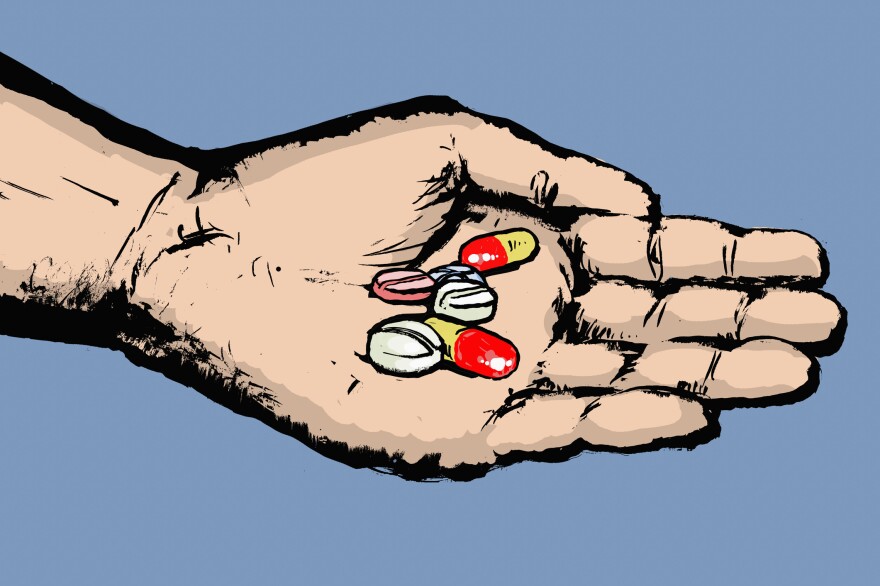The Tennessee Opioid Abatement Council’s (OAC) first round of funds have been approved, and the winners are overwhelmingly in East and Middle Tennessee. The council will disburse $80 million to 116 programs in the latest push to get relief funds into communities.
Of the 116 award recipients, just five are based in West Tennessee, accounting for about 2% of the total awarded grant funds. West Tennessee accounted for 20% of overdose deaths in the state, according to 2022 state data.
The grants come from lawsuit settlement funds paid out by pharmaceutical companies like Johnson & Johnson and Food City. This round of grant awards included over $25 million in funding to universities and colleges.
Of the 15 members of the OAC, one represents West Tennessee. Dr. Clay Jackson is a medical doctor based in Memphis, and attributes the funding disparities to the lack of established organizations in the region.
“We wanted very, very high quality grant applications,” Jackson said. “Those types of applications are most likely to come from people who are already in the treatment space. And people are most likely to be in the treatment space in places where these are challenges which had been long recognized.”
East Tennessee, including some hard-hit rural counties, has been long recognized as struggling with an opioid crisis. Forty-nine programs in the region will be funded by the OAC in this round of community grants, including a faith-based nonprofit treatment center in Claiborne County. Live Free Claiborne actively treats about 30 to 40 individuals in the area who struggle with substance abuse, and said they reversed 150 overdoses in 2023.
“We provide them with Naloxone, we give them food, we give them clothing, and most importantly, we give them smiles and non-judgmental love,” said Joe Hoffman, director of Live Free.
The organization is located in a fairly remote area, and is one of the few treatment centers in the area. The OAC will award them with almost $200,000 this year.
“There are many people who are unable to gain access to harm reduction services and to recovery services,” Hoffman said. “As soon as we sign the contract, and the funds are released to us we plan on purchasing a van to take our harm reduction program out to some of the further reaches of Claiborne County.”
And the need for these types of services is there. According to data published by the state, there were 3,800 overdose deaths as a result of prescription drug abuse in Tennessee in 2022. Over $1 billion will be awarded to Tennessee across the next two decades in the hopes of reducing these numbers, all stemming from settlements in lawsuits with major pharmaceutical companies. The Opioid Abatement Council was chartered in 2021 by the general assembly to handle those funds. Jefferson County was recently recognized for its planning process in the use of its opioid relief funds.
As provided by Tennessee law, 35% of the funds which the OAC handles will be distributed directly to counties based on a stratified model determined by need. Counties with larger populations generally receive more funds, and these payments began rolling out in 2023. So far $31 million has been paid out, with a further $31 million expected this year.
The remaining 65% of funds are awarded to community grant applicants. Almost 400 projects applied for funding during this year’s cycle. The OAC narrowed these down for approval by randomly assigning each grant to a councilmember and two executive staff members for scoring. If the grant met a minimum score of 66.67, it could then be approved by a council vote for funding. If it fell below this threshold, it was automatically rejected.
A Memphis-based opioid recovery organization that did not receive funding told WUOT that it was unclear why West Tennessee was overlooked in this round of funding, but it plans to apply again next year. The group declined to be identified in case it could affect their ability to be funded.
“If someone wasn't awarded, I would encourage them to contact the office,” Jackson said. “And I would just say, stay engaged in the process. Try again in the next round next year, and then stay in the meetings.”
At the March 18 meeting of the council, Chairman Stephen Lloyd said that even if money is spent as wisely and as efficiently as possible, computer models predict that the state will not see overdose numbers reach pre-1997 levels until at least 2046.
Dr. Jackson agreed that the problem will take time to address.
“The opioid crisis has been going on for over 18 years,” he said. “And if you look at per capitas for overdose, it's not better. Naively, we thought if we reduced prescriptions in our state for opioids, then we'll see overdose deaths fall. And that did not happen. If we keep doing the same thing that we've been doing, we're not going to have the results that we want.”
Despite the distant horizon, he also noted that an impact can be made with sufficient community involvement.
“I think we can make a significant dent, but it's going to take all players,” Jackson said. “We need grassroots community engagement, we need churches, community centers, volunteers, physicians, nurse practitioners and physician assistants to take this on. And to recognize that this is a public health challenge.”
A correction was made on April 23, 2024: an earlier version of the story used a quote that was cited in error.
(This story was co-produced with students from the University of Tennessee's Department of Journalism and Media.)



